Disclosure: Please note that some links are affiliate links, and at no additional cost to you, we earn a commission if you make a purchase.
If you would like to support this website in some way, using these links will help do exactly that.
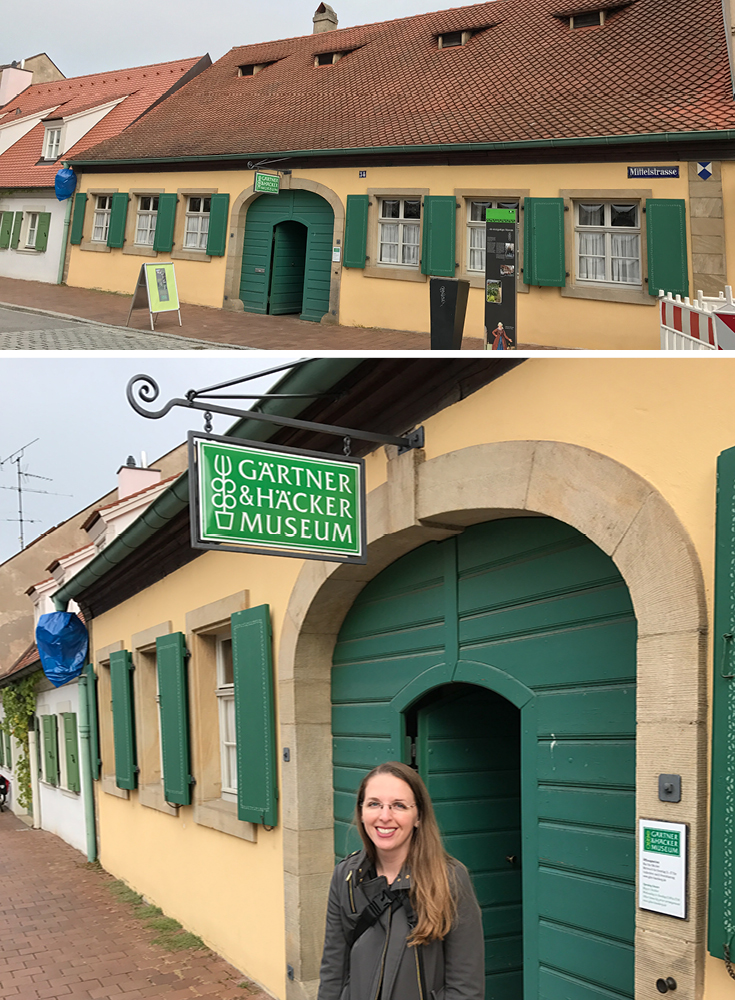
A large part of what makes Bamberg who it is as a city, and worthy of UNESCO world heritage as an entity, is it's unique gardening culture within the city limits. To understand why this is important, you have to see it. Visit Bamberg Market Gardeners’ and Vintners’ Museum and explore the surrounding gardening neighborhood with a guided map (sorry only in German Gardeners' District circular route (1,6 MB))
First off, I loved visiting the Gardeners’ and Vintners’ Museum in Bamberg. It was easily the most meaningful part of my trip to Bamberg. However, leading up to visiting, I was uncertain what I was really in for. The official website is completely in German, and the only other mention in English was abbreviated on other sites. If the website was only in German, would the museum only be in German? I was relieved to discover some English signage, and the available audio tour was completely available in English. So never fear! To help with the language barrier, I’ve typed up two of the English signs which I found at the museum that provide a great overview. Altogether, with my comments and photos, you'll agree that this museum is a must-see in Bamberg, Germany!
Listen to the Audio Guide, or Pass?
There are very, very few signs in the exhibits. You really need the audio guide to get the most out of your visit. The audio guide numbers hang from the ceiling and if it was a solid color and or had a wreath it was a main/general topic. Others were about specific items, like the kids toys. This way you still control your trip, rather than having the audio guide tell you where to go, which was nice.
How Long Will a Visit Take?
Estimate 1 hour if doing the audio guide.
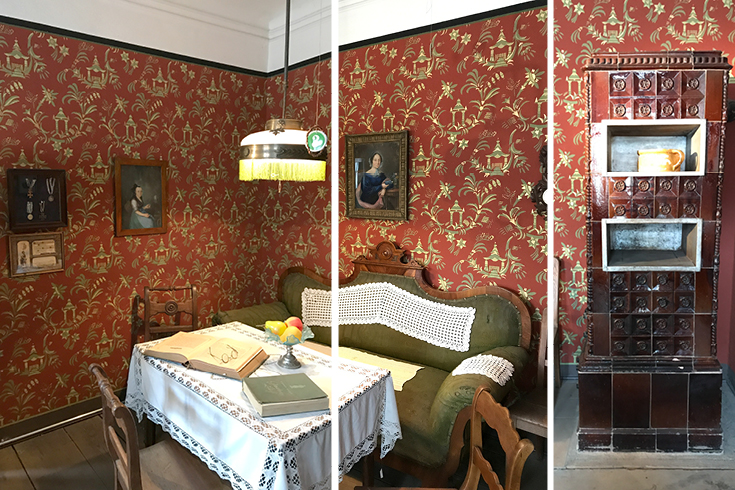
Taken from English Signage in the Museum
“Welcome to the Gardeners’ and Vintners’ Museum!
The museum offers an insight into the lives, culture and history of the city’s market gardeners and vintners. When Bamberg received World Heritage Site status in 1993, the unique cultural landscape of the market garden lands within the citiy was one of the reasons.
Based in a typical gardener’s house from 1767, this indoor and outdoor museum invites you to learn about the gardeners’ lives around 1900. The diversity of vegetable and herb varieties as well as tools and religious customs are also documented. The gardeners and vintners of Bamberg founded a museum society in 1975 and opened their museum in 1979. In 2012 the exhibition was completely redesigned.
Since the late Middle Ages, Bamberg’s gardeners have made use of the lands east of the Regnitz river. The mild climate was conducive to growing many varieties originating in Mediterranean areas. Bamberg’s gardeners became known throughout Europe and achieved commercial success through the trade in liquorice root (the raw material for medicinal remedies and liquorice confectionery) as well as in seeds for onions, caraway, leeks, swede, turnips and beets, kohlrabi, lettuce and spinach.
The vintners’ were known, like the gardeners, as farming townsmen (Häcker in local dialect, which derives from the hacking action associated with their work and their tools). In the 18th century the climate grew colder due to the Little Ice Age and production of Bamberg wine, which had come to be called belly-biter (Ranzenbeißer), was no longer viable. The producers switched to hops, fruit and grains.”
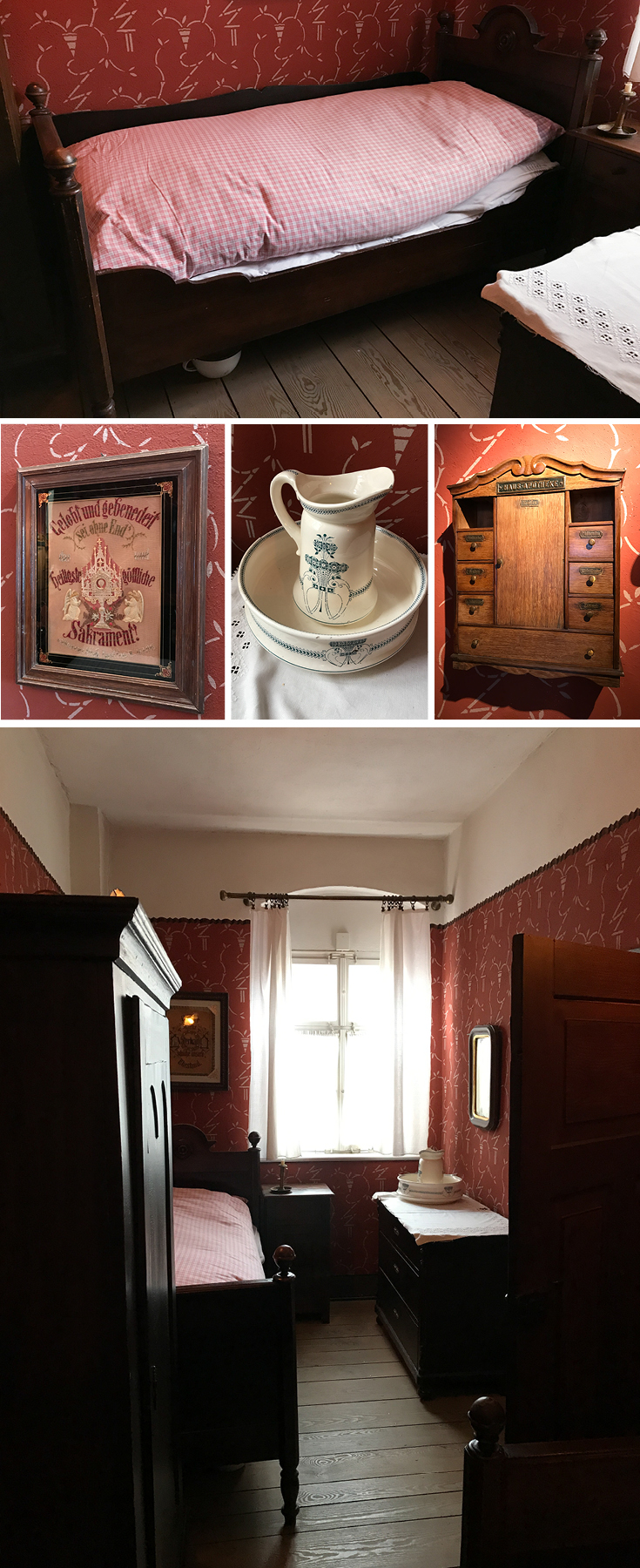
The Gardeners' Home
The home was styled for 1767 with a general parlor, kitchen, bedroom, kids’ room, grandparents’ room (which was an exhibit room and not styled as it was during the time). The through-way, or center foyer of the house was designed to allow a wagon to pass through to store food directly above the living quarters or to the garden out back.
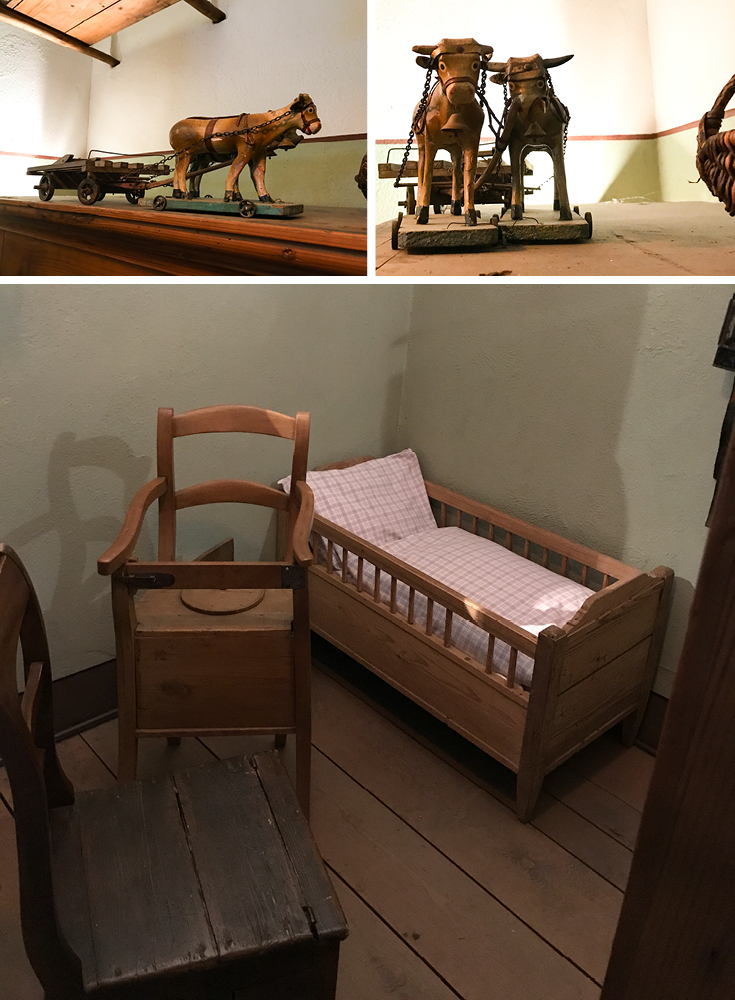
The Kitchen was Surprisingly My Favorite Room
I loved how they used open shelving to organize the kitchen. The stencil border, periwinkle blue, and stone tile combined for a charming kitchen. Attached directly to the wall are metal containers for flour and salt where you could directly scoop from while cooking.
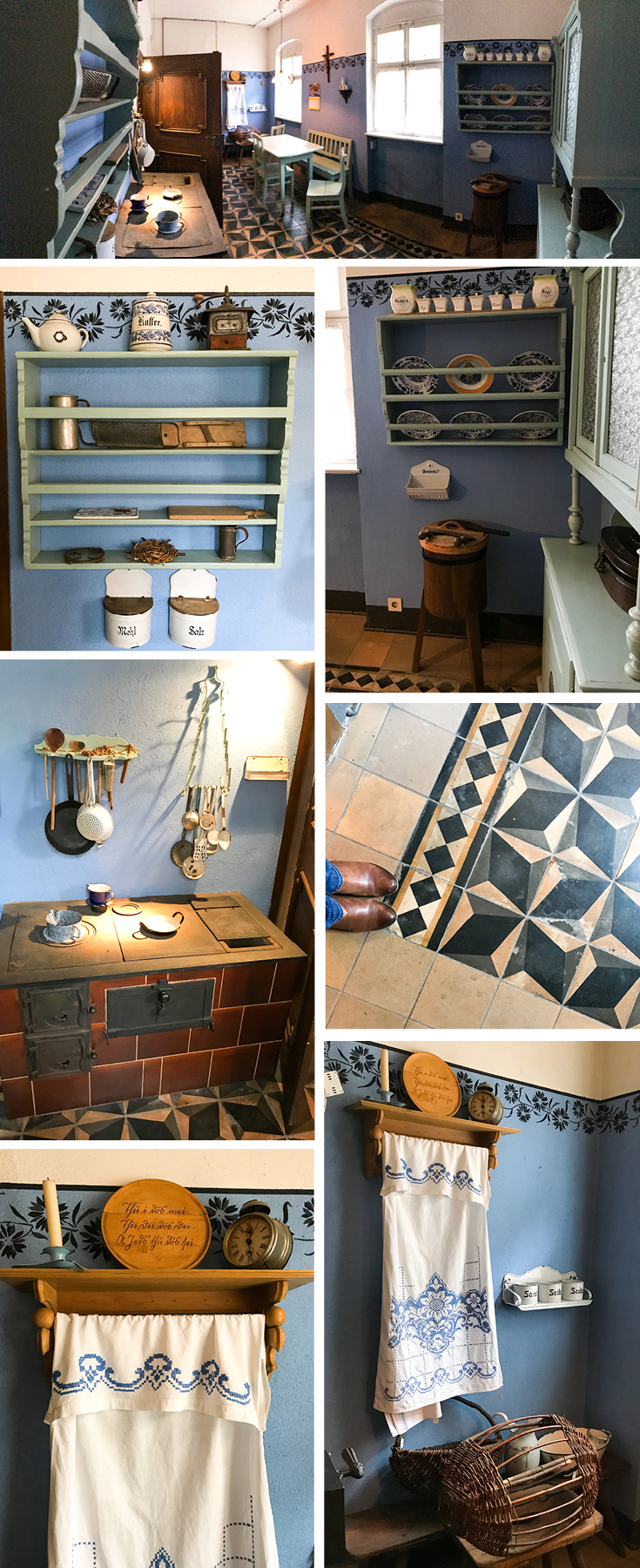
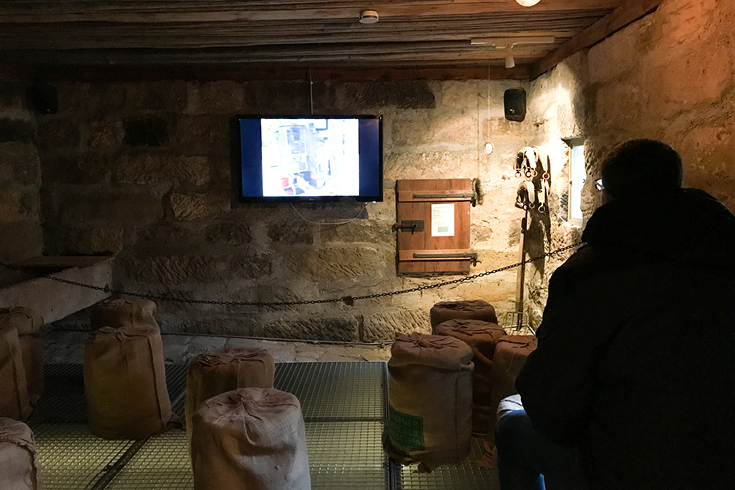
Hay Loft
In the loft above, there was an interactive video oriented display that explained the different farming and gardening tools. They also had period costumes of the time as well as a large historical photo showing the sellers, and the baskets they carried and sold from.
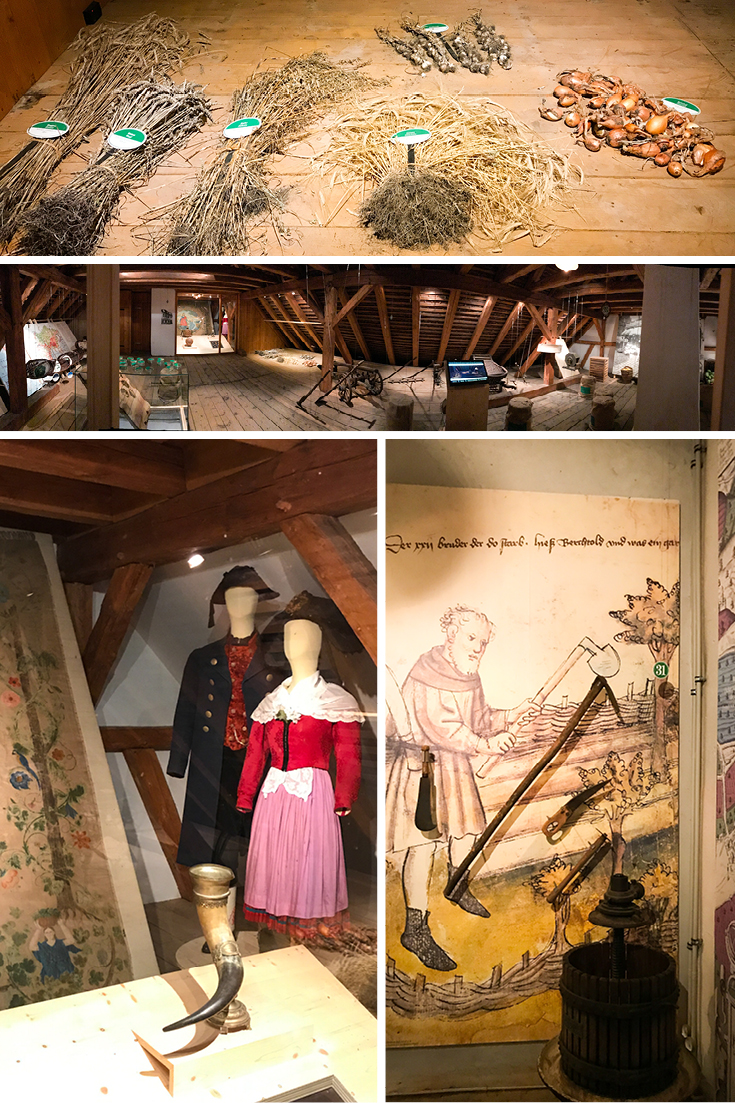
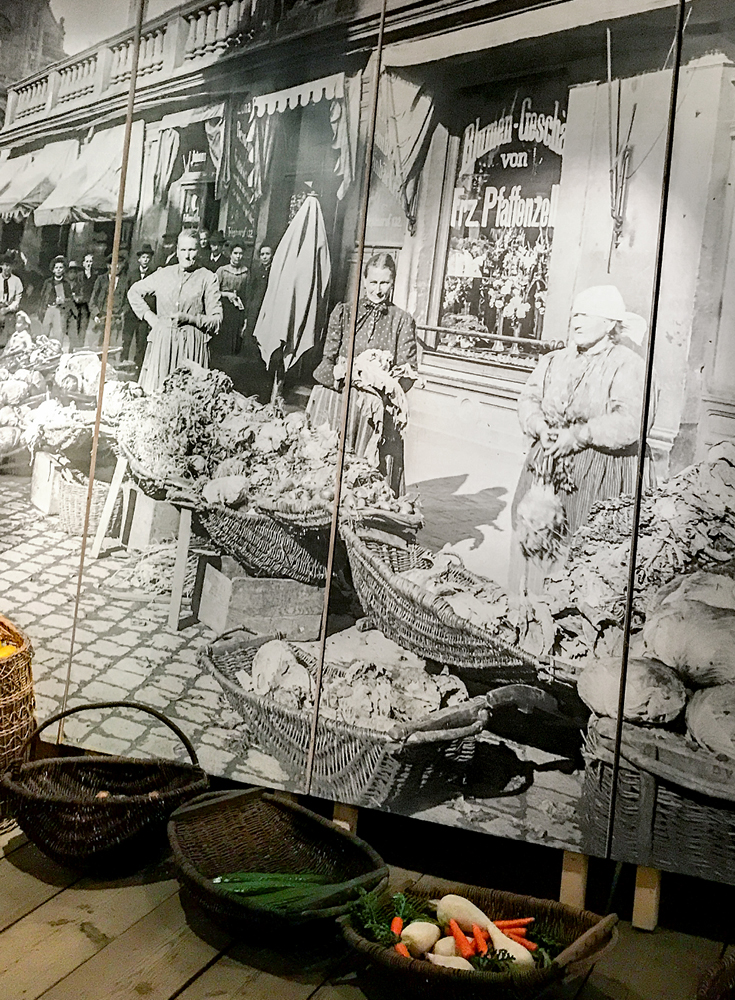
The Grandparents' Room
Here, the Museum showcases the Guild's processional staffs that were used in religious ceremonies and parades.
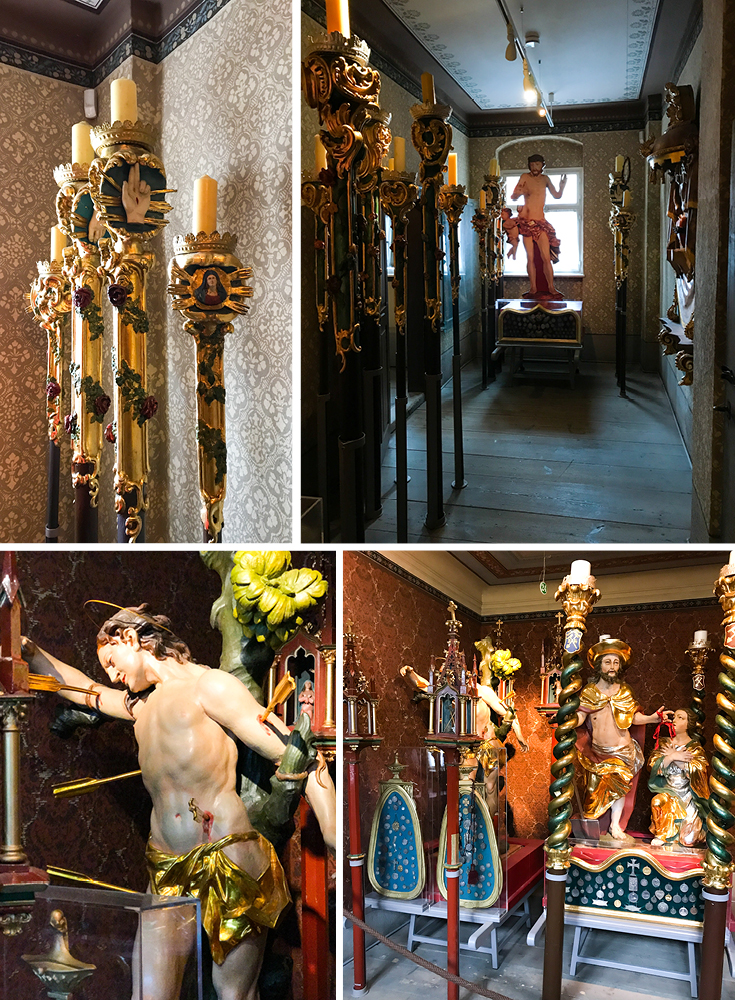

Bamberg Heritage Garden
The working garden out back had everything from flowers to vegetables. A church stood sentry in a distance making for a picturesque vista.
Taken from English Signage in the Garden:
“Bamberg Heritage Garden: Helping to conserve the “green heritage” of Bamberg’s gardeners
The Bamberg Heritage Garden was founded as part of the Urban Gardening Project run by the Bamberg World Heritage Office. In July 2013 a specially-founded voluntary association took over the running of the Bamberg Heritage Garden. The plants are cultivated following organic principles by volunteer workers from the association. The Bamberg Heritage Garden contributes to the conservation of the rare, local Bamberg vegetable varieties. It assists in the rediscovery of vegetables and varieties that are unique to Bamberg, some of which may already have died out or been forgotten. In the past, the seeds of local varieties, as well as knowledge about how to use them, have been lost. The Heritage Garden is intended to counteract such loss. In addition to preserving the ‘green heritage’ of the Bamberg gardeners, the garden is also a place where knowledge about growing and tending can be handed down-intangible heritage.
In the Heritage Garden multiple varieties of a plant are grown side by side, compared and explained. In this way, the Bamberg Heritage Garden helps maintain biodiversity, while also making history and environmental education come alive. Along with the well-known Bamberg local varieties of garlic, onion, radish, pointed savoy cabbage and the ‘Hörnla’ potato, numerous heirloom varieties of bush and climbing beans from the Bamberg region are being grown, which in former times were of great importance in local cuisine. In the course of the project seeds have also been discovered of lone local variety previously believed to have been lost- the Bamberg pear-shaped onion. This onion variety has been cultivated in the Heritage Garden since it's rediscovery, with the aim of propagating the seeds and preserving the variety for future generations.”
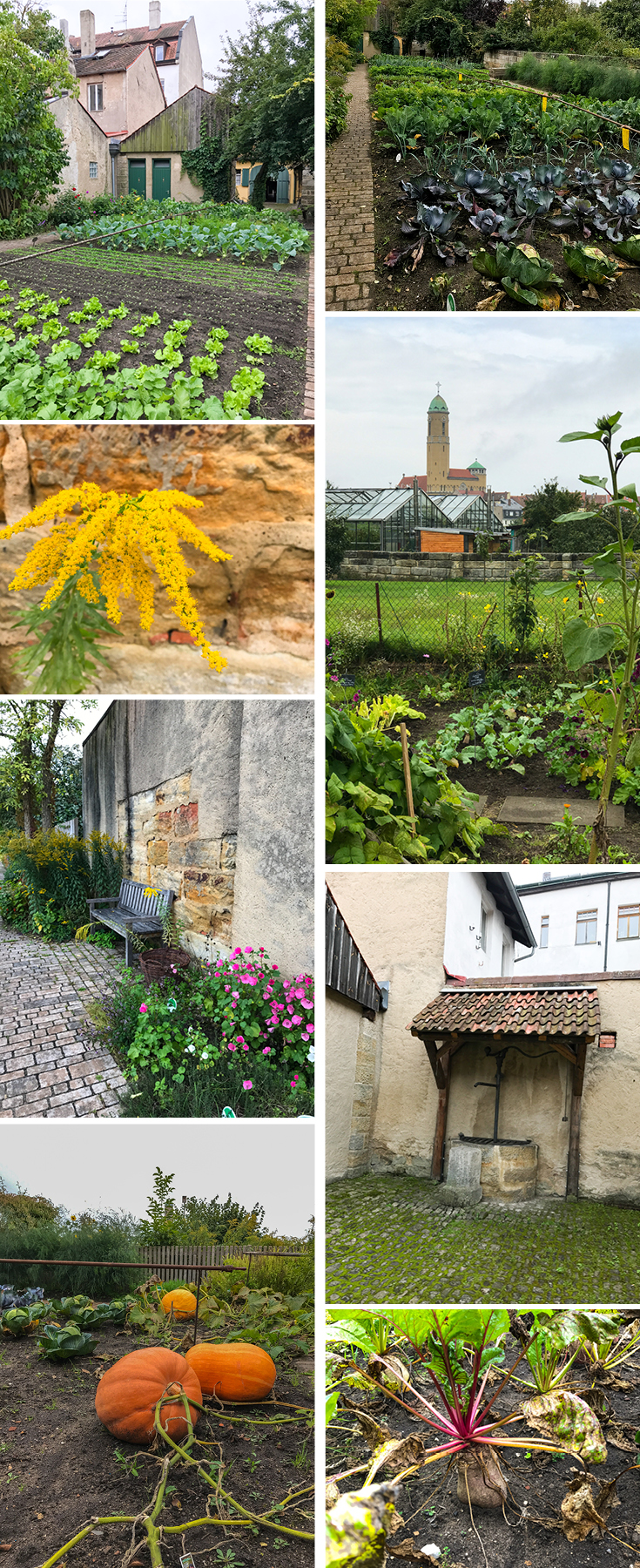
Follow Along
If you enjoyed this article, or these topics sound interesting to you, you'll love our weekly newsletter. You'll receive the newest posts each week and exclusive access to free planning resources like ‘Packing List & Tips for 2 Weeks in Germany’ and ‘Everything You Need to Rent a Car in Germany’.
Thank you for reading!

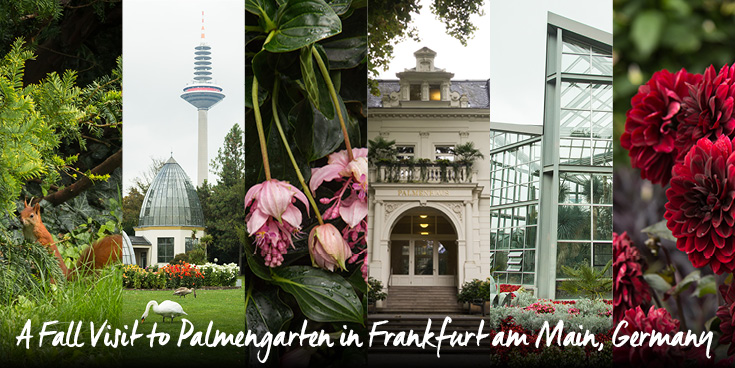
If you’re looking for a tranquil, breath of fresh air while exploring the skyscraper city Frankfurt am Main, I have the place for you. In the middle of the city, is a large, historic, landscaped park showcasing a large greenhouse complex, gardens, playground, lake, and more. Like many of Frankfurt’s attractions, Palmengarten has always been a public park supported by the citizens of Frankfurt. A joint stock company was founded in order to acquire the famous plant collection of the Duke Adolph of Nassau (who found himself on the losing side of a war and needed to sell), and Heinrich Siesmayer, a landscape gardener laid out the initial design for the Palmengarten in 1869 in an English garden style. It's easy to forget that in those times, a majority of the plants on display had never seen before as they were from inaccessible, far away countries. Today, with global travel becoming easier for more people, it's still fascinating to see faraway habits recreated in the middle of Germany. It's possible to visit all of the exhibits in roughly two hours. Check the calendar to see if there are any temporary exhibits being shown in the Palm House.
As a photographer, there was beauty everywhere and I had so much fun shooting plants I’d never seen before in such a calm environment. I’m excited to share my best shots from our visit.
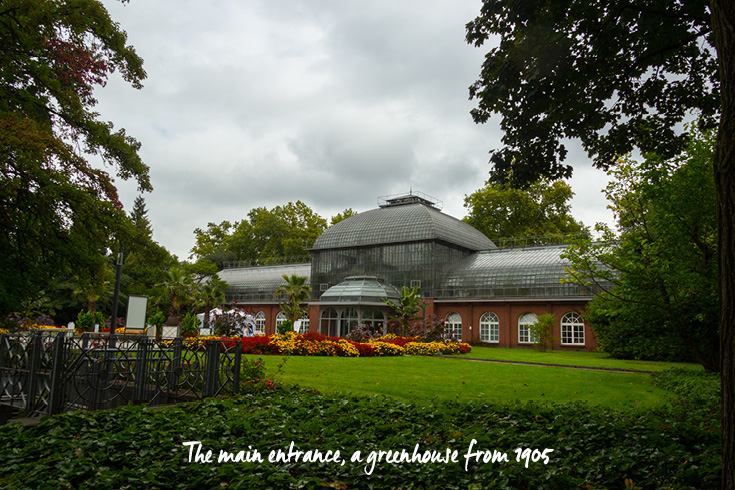
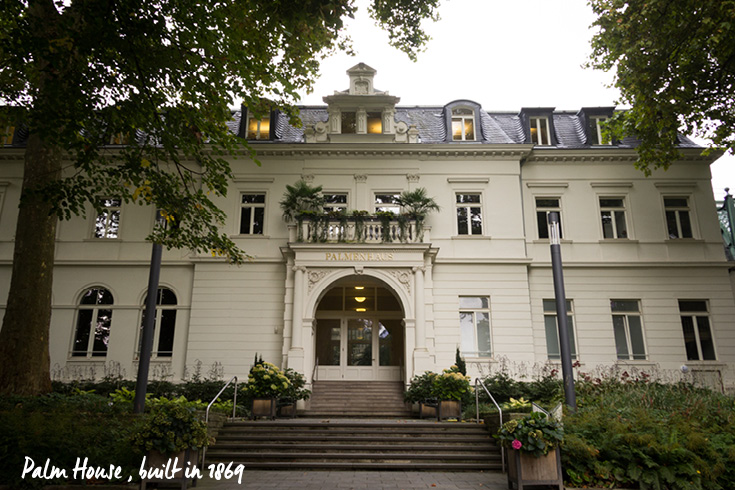
Is There a Rose Garden?
Of course there’s a rose garden. What plant collection would be complete without one? It's peak time is in spring and summer, and a favorite rental space for weddings.
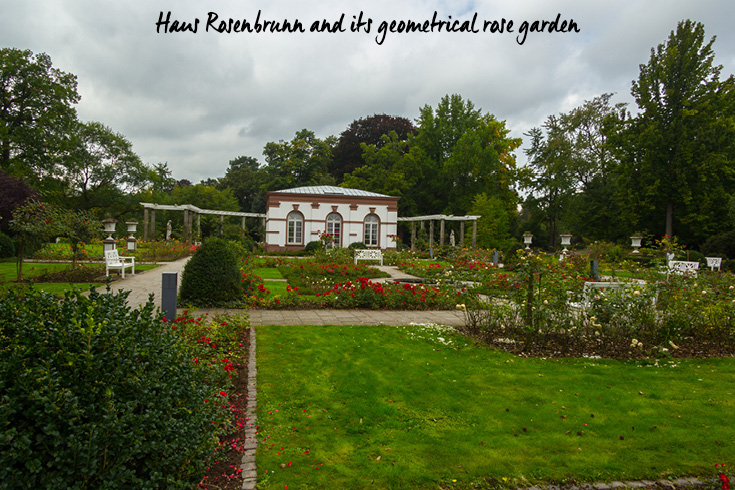
All Year Long
Palmengarten boasts multiple greenhouses, each showcasing habitats from all over the world, even Tazmania and the Arctic! Thanks to the greenhouses, you can enjoy the Palmengarten all year round, no matter the weather. We went in September, and although it was cooler and overcast, the dahlias were in full bloom and we loved visiting the Tropicarium.
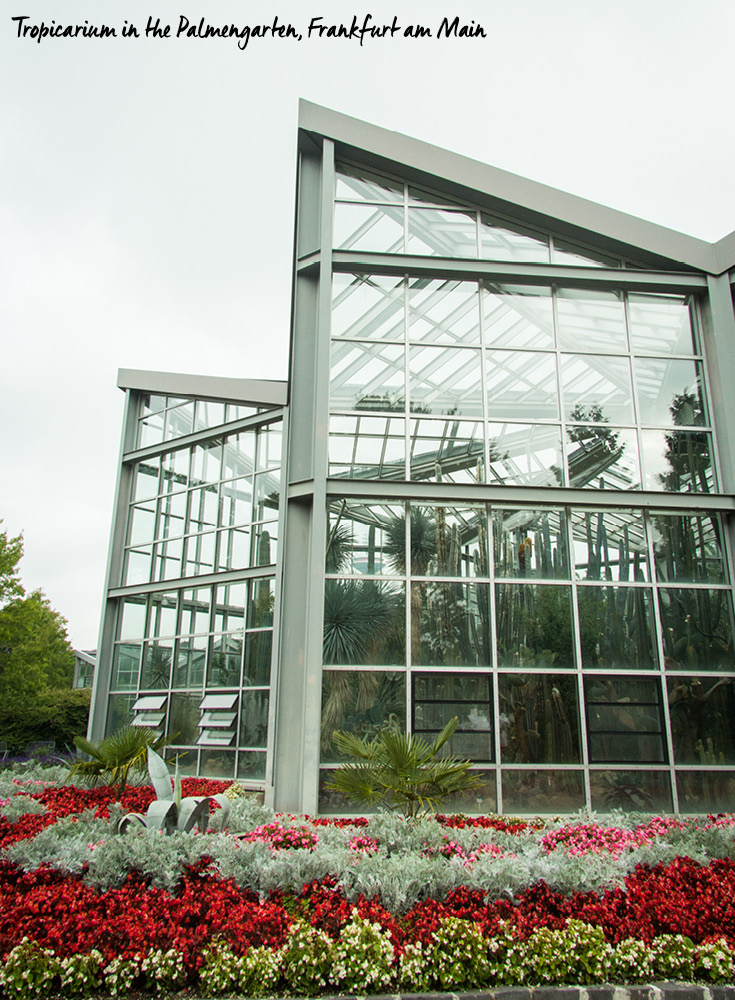
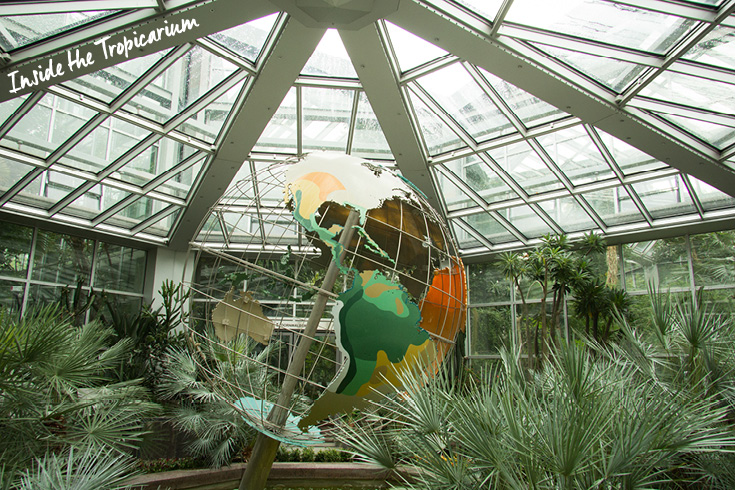
When you enter the Tropicarium, you’re met with an oversized spinning globe, surrounded by plants. From there, you choose which simulated natural habitat you’d like to see, arid or humid. There are semi-desert regions, fog desert, deciduous dry forests and thorn forests in the southern, arid habitats. The monsoon forests, cloud forests, mangrove swamps, and lowland rainforests are in the northern humid habitats. I was delighted to see turtles and birds living inside the greenhouse. The turtles were basking on a log by a fountain.

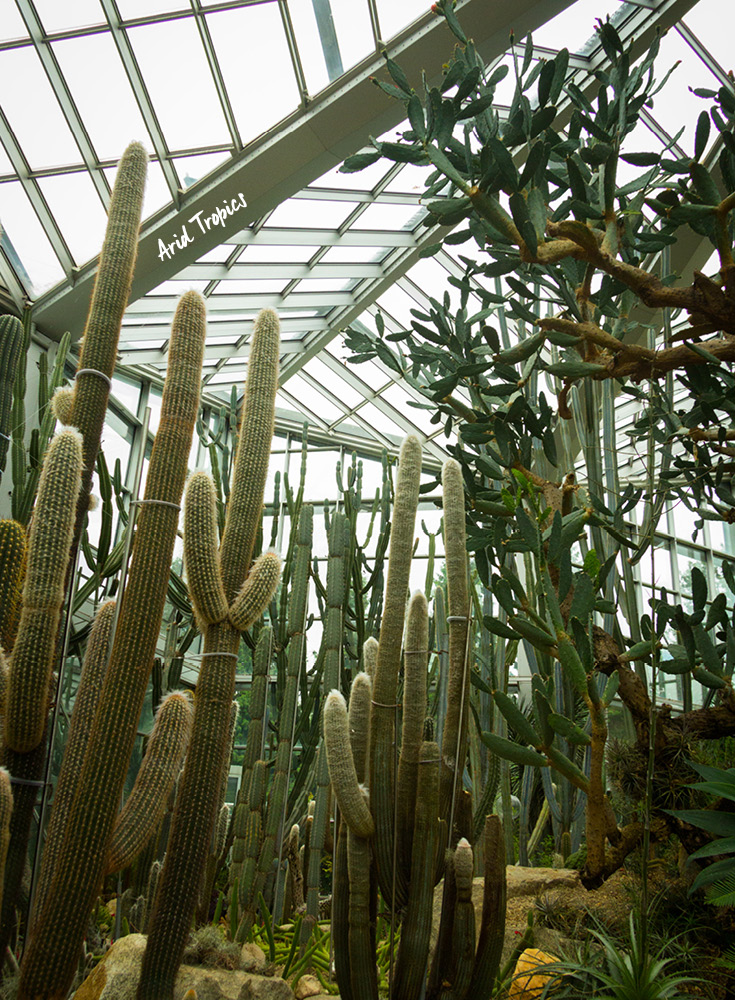
Palmen-Express
I was surprised to see an old fashioned style train. The park is a bit of a walk if you do everything. Palmen-express train connects the northern and southern parts of the park for a small fee. Parents with tired kids will love this, but I was enjoying the long walk personally. It's a cute element to the park.
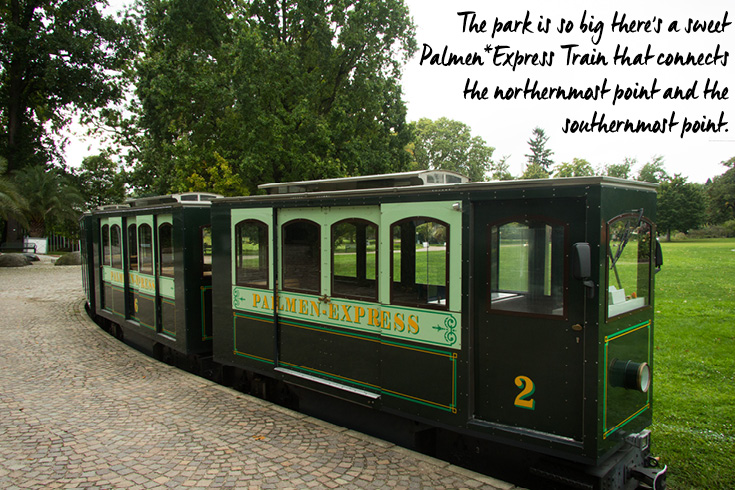
Haus Leonhardsbrunn
One of the best things about visiting Germany in September is that the dahlias are in full bloom. I was in dahlia heaven when we made it to the northernmost part of the park. In front of Haus Leonhardsbrunn was an enormous arched bed of plenty of dahlia varieties. A family of swans were daintily posing on the playing field in front, adding to my photographer’s euphoria.
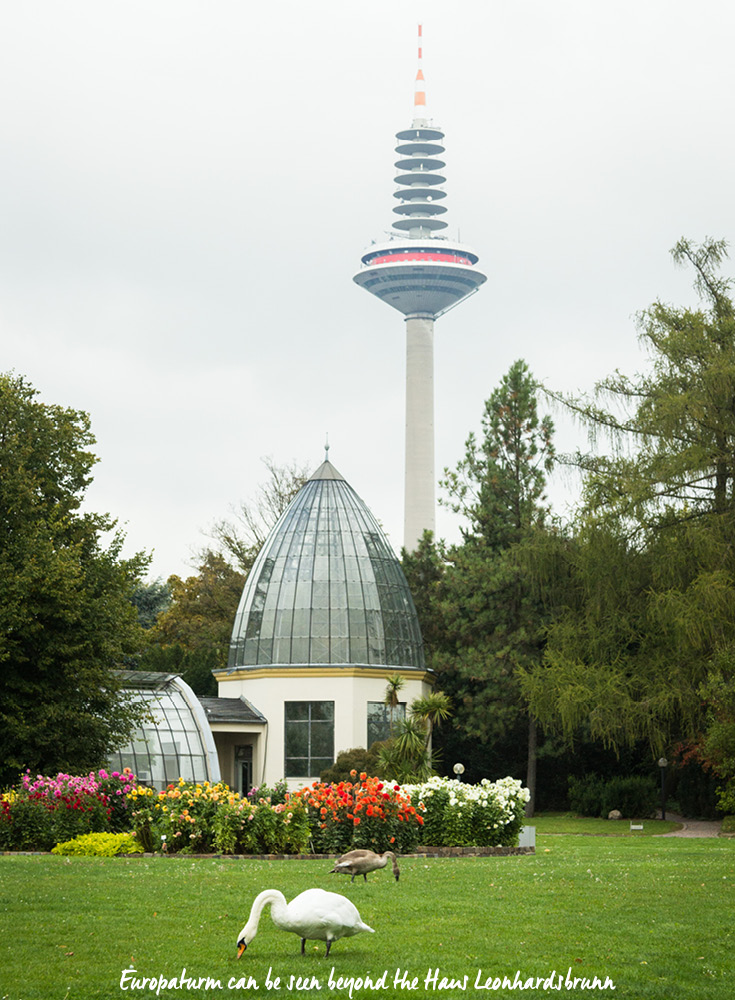

Rock and Heather Garden by the Lake
The Frankfurt Palmengarten could also be a great date destination. In addition to providing a beautiful, calm backdrop, there’s also a large shallow lake which offers paddle boat rentals. Overlooking the lake is the waterfall from the nearby rock and heather garden.
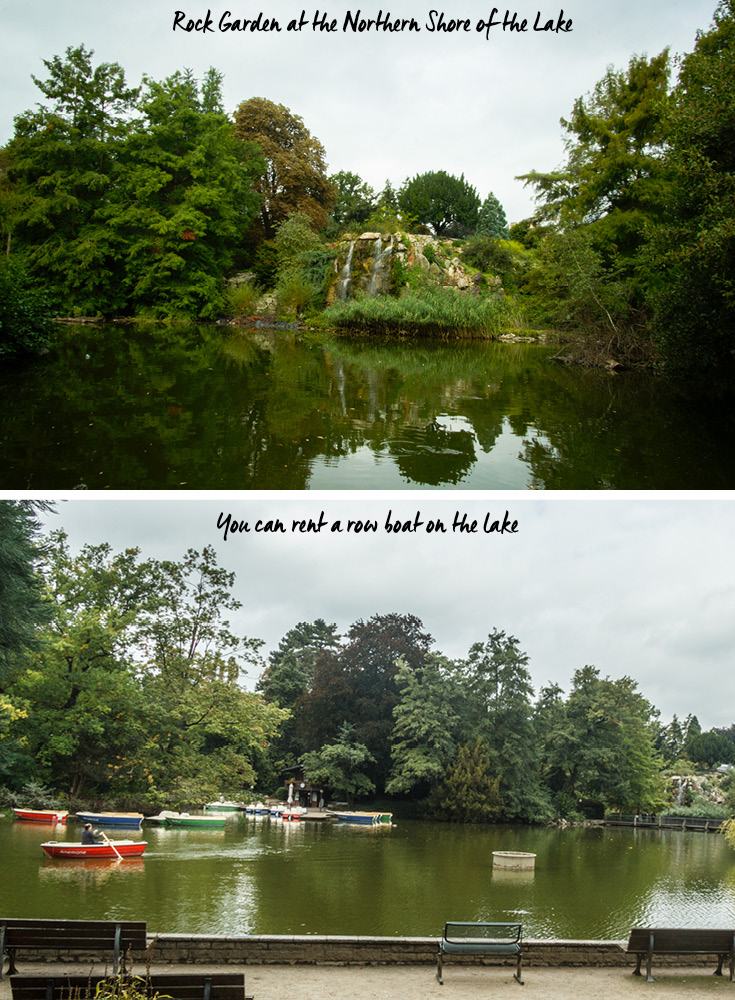
Squirrel Haven
If you want to see red German squirrels, Palmengarten is a great place to spot them. I saw four. Normally I count myself lucky if I spy ONE squirrel in two weeks in Germany.
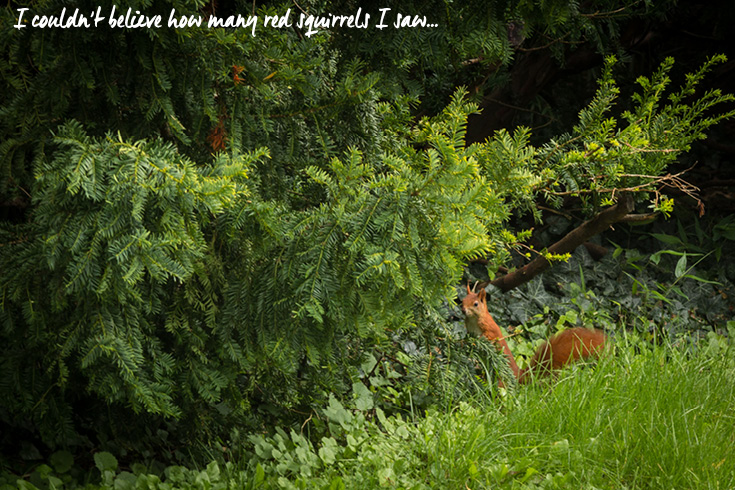
Follow Along
If you enjoyed this article, or these topics sound interesting to you, you'll love our weekly newsletter. You'll receive the newest posts each week and exclusive access to free planning resources like ‘Packing List & Tips for 2 Weeks in Germany’ and ‘Everything You Need to Rent a Car in Germany’.
Thank you for reading!

An island of flowers? It's not the first image that pops into my mind when I think of Germany. As we were planning our family trip to Lake Constance and it's towns, the flower-filled island of Mainau popped up. I’m passionate about flowers, and deeply appreciate the labor that goes into making beautiful gardens. Seeing the recommendations that you can easily spend a half day, or full day there, I was really looking forward to exploring Mainau.
To kick off our flower adventure, we needed to cross Lake Constance. We rented a house for the week in Meersburg, and the fastest, cheapest way to get there was by ferry boat. And not just any ferry boat, a ferry boat that carries cars! It would be my first time on a car ferry. We were so lucky, as we pulled up to the ferry boat, we realized we would be the first in the line of cars. Our view from our car would be perfect! While we were waiting, a man walked up and down the cars selling newspapers. It boggled my mind that this was for many an every day commute! Lake Constance was foggy this early in the morning, and there was a nip of chill in the air. Torn between wanting to hear the water and the birds or staying warm inside the car, we compromised and rolled one window down. It made for better photos that way too.
After the ferry ride, it was just a short drive to the parking lot where we left all wheels behind. We paid our admission, and walked along a short path by the lake and spied the feathered residents enjoying breakfast. We saw several ducks and swans diving down and up again.
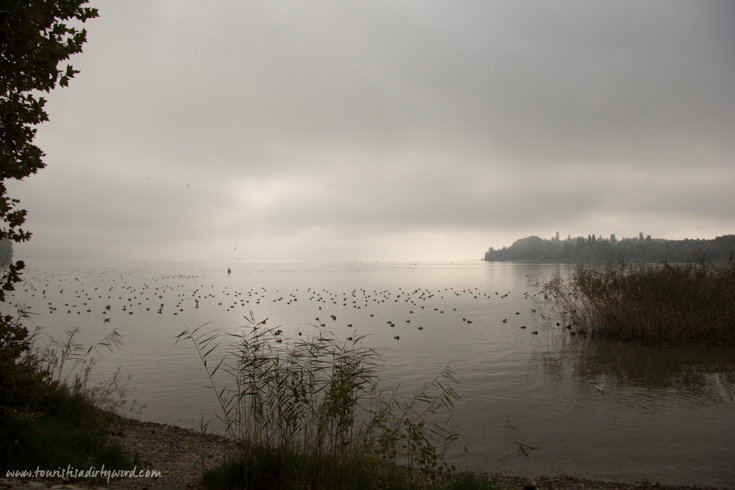
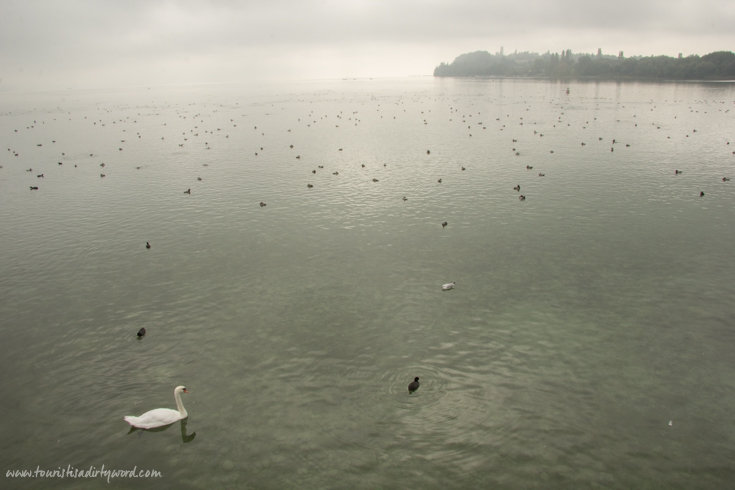
There are several circuits that you can take around the island and we chose to walk counterclockwise. Right away, we saw a group of duck sculptures built out of flowers, then an extravagant peacock built out of flowers! It was like being in Cypress Gardens again. There was once a fantastic botanical park in Winter Haven, Florida called Cypress Gardens, and they had numerous animal sculptures built entirely of flowers. My grandparents used to take my brother and I every time we came to visit. It's no longer open, and has been transformed into a Legoland Theme Park. It made my heart smile to know in Germany flower animal sculptures still exist.
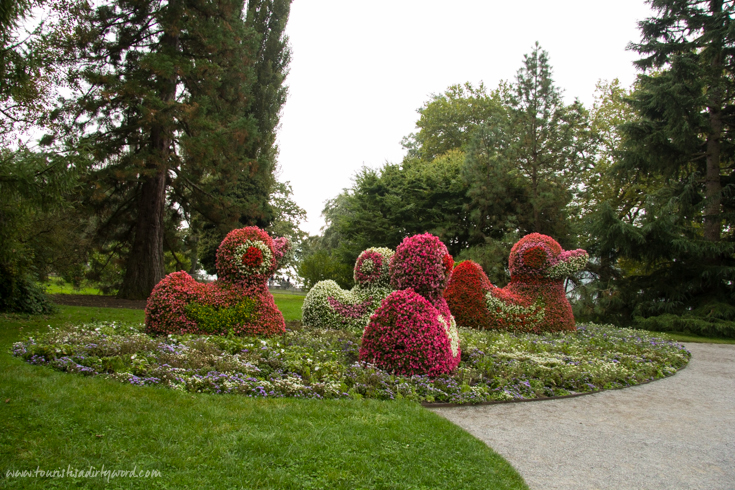
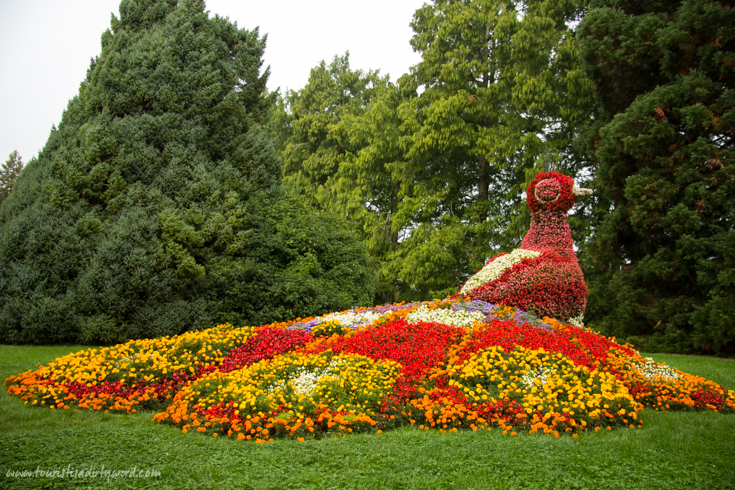
Then we discovered a miniature farm where a rabbit had chickens and roosters for roommates. The rabbit had an extra espresso carrot that morning and sprinted in between the roosters, startling them. It was comical to watch. There was a goat who said good morning, and we visited with a calm, orange tabby cat that was not phased by anything. With the morning sunshine starting to bust up the fog clouds, his orange fur was angelically lit.
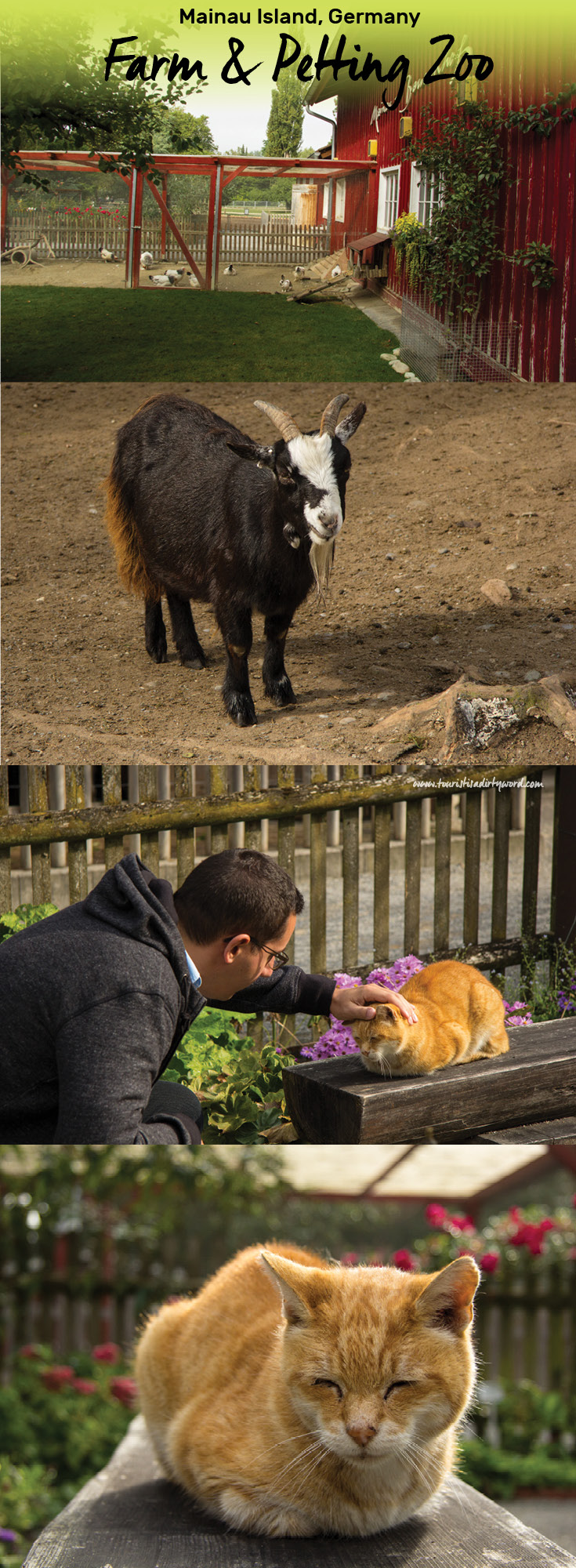
The farm was beside an area with a charming wooden bear stuck in a tree log, and a moss-covered troll couple.
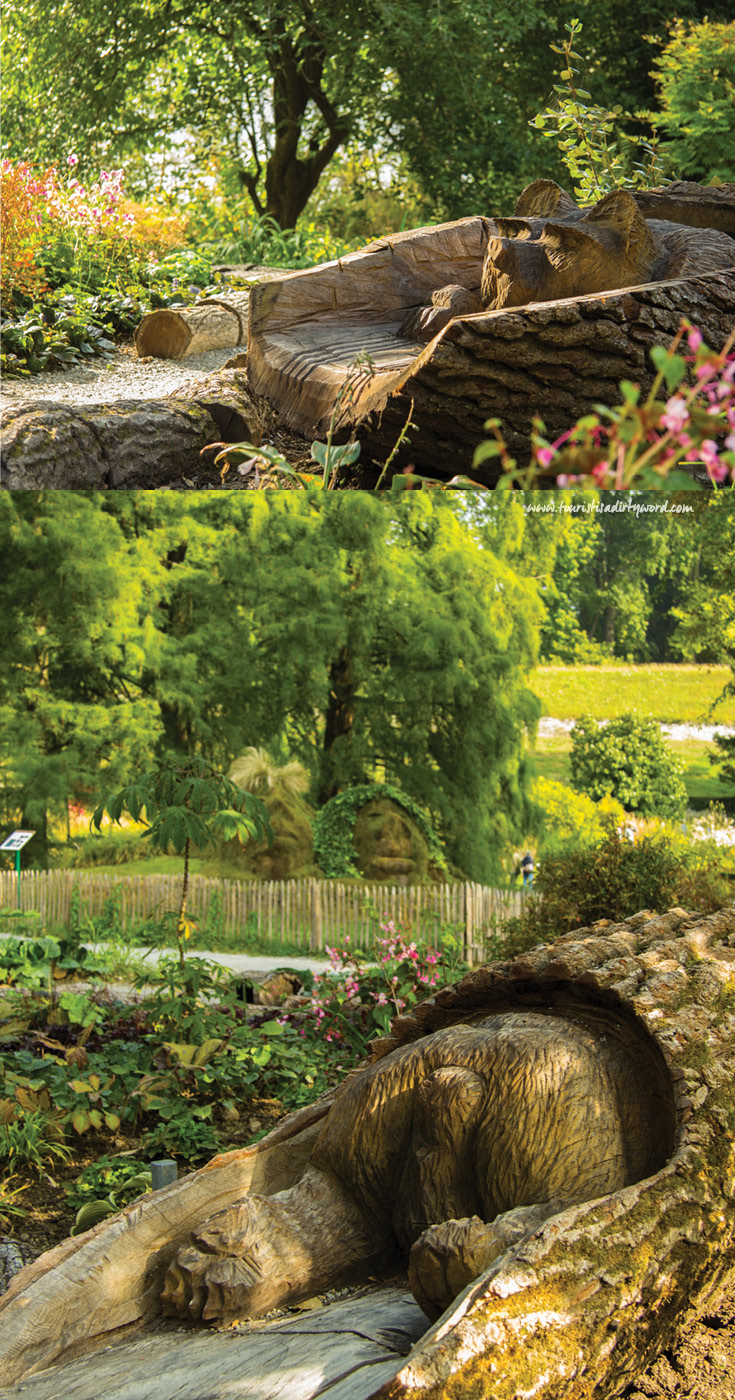
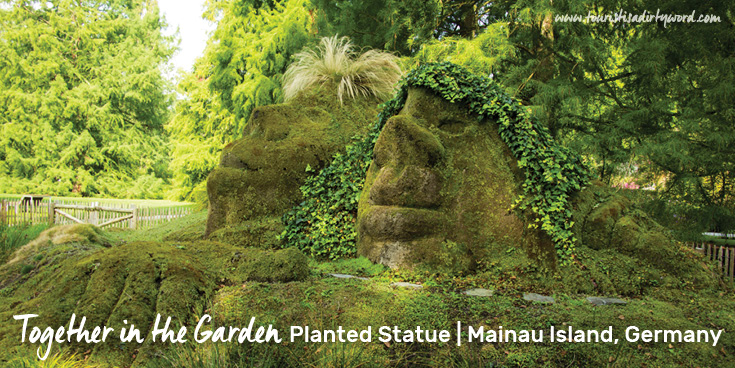
The path we were on wound up and down the shore of Lake Constance. I loved the Dahlia garden which were in season, and they had about 75 to 80 different varieties on display.
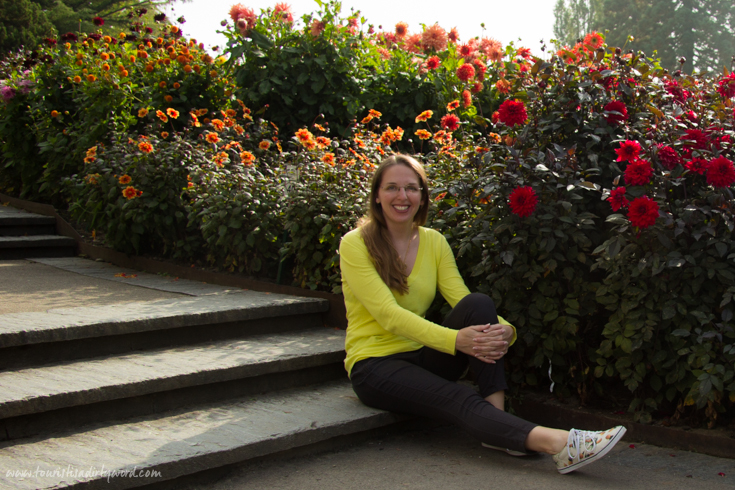
Further along, we saw the Italian cascading fountain, and the map of Lake Constance illustrated through flowers.
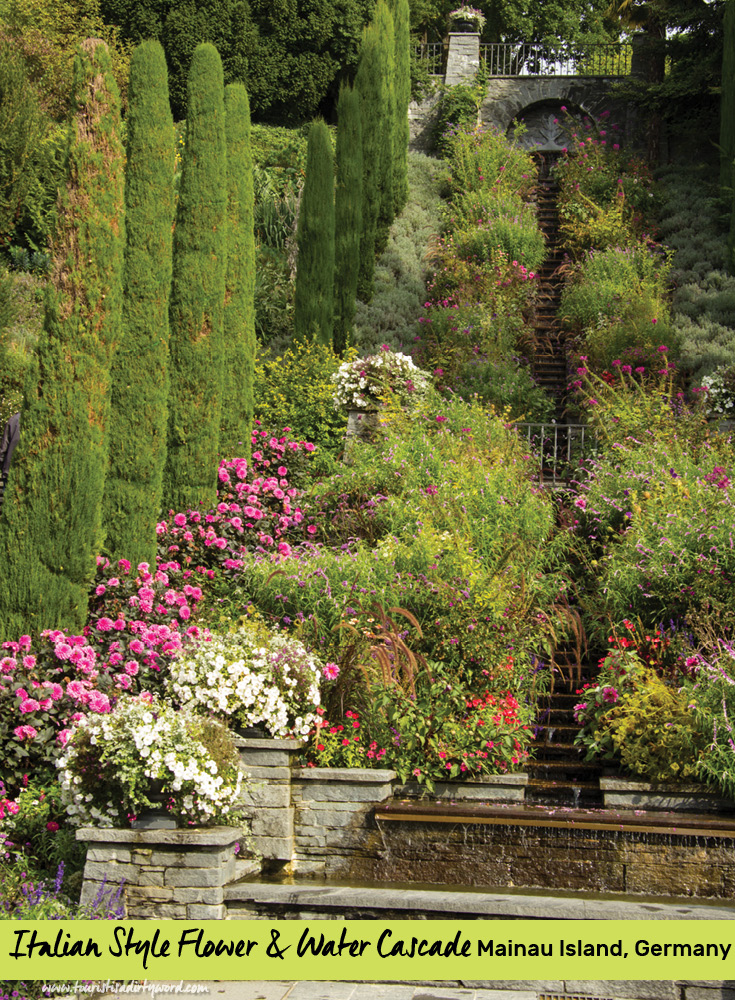
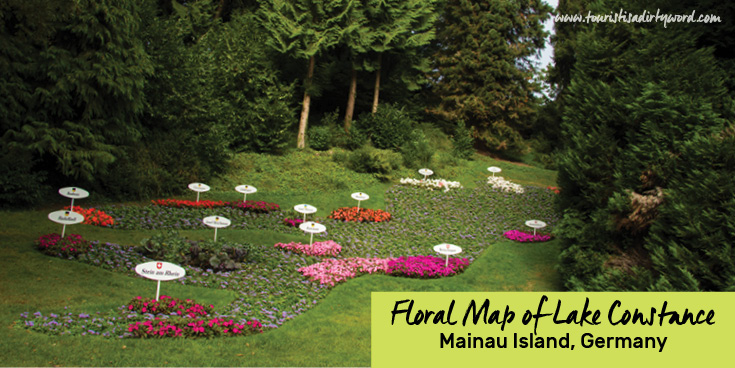
We took a break at a garden cafe where the tables had built-in flower planters. It was just what we needed, walking halfway around Mainau Island already.
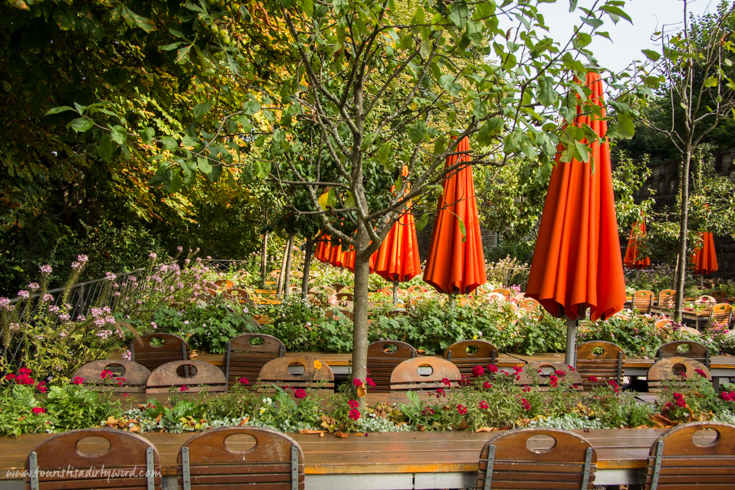
On top of the hill, the 13th-century Baroque palace and church stands from the time the Teutonic Knights owned the island. Alongside the church is an Italian rose garden complete with statuary and fountains. Wherever we looked there were colorful blooms surrounded by lots of greenery.
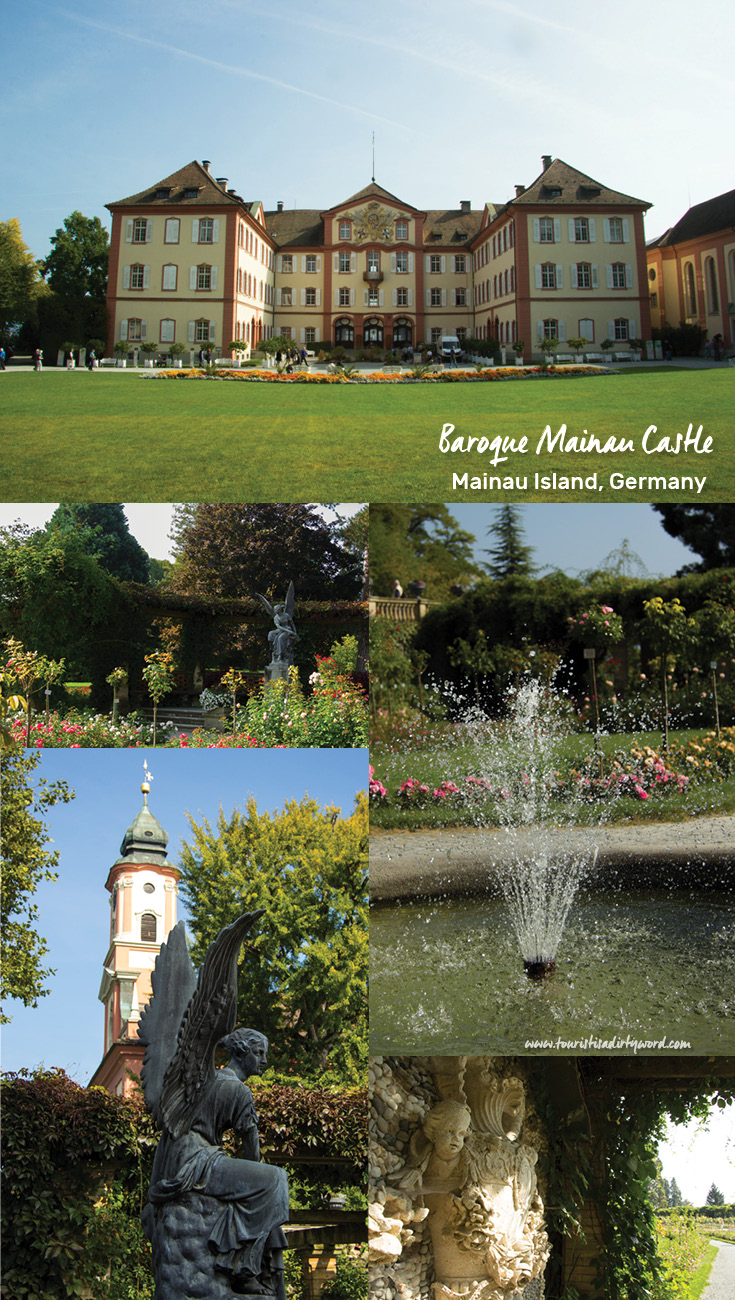
We passed giant redwood trees on our way to the butterfly house. The butterfly house was overwhelmingly crowded, both with people and butterflies. A pond with a waterfall entertained a gang of turtles, gorgeous orchids hung from the ceiling, and butterflies were everywhere. Specific feeding trays put out for the butterflies was a sure-fire way to get a good photo. I made myself dizzying trying to photograph a few of them! There was always a fluttering of wings passing overhead.

By the end of the day it felt like we had seen the entire Nature Encyclopedia. It was refreshing, and a wonderful experience not to be missed, if your ventures take you to Lake Constance.

Follow Along
If you enjoyed this article, or these topics sound interesting to you, you'll love our weekly newsletter. You'll receive a free Germany Packing list for signing up, and you'll receive each week's newest posts every Friday. Thank you for reading!

